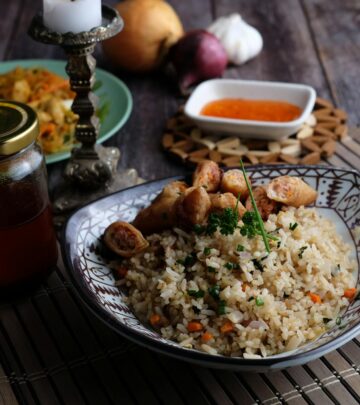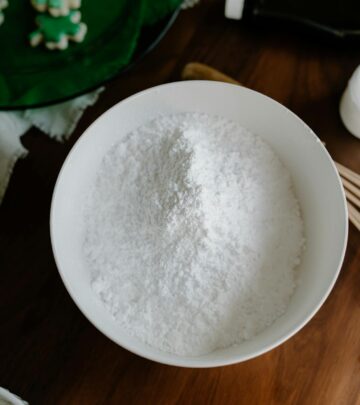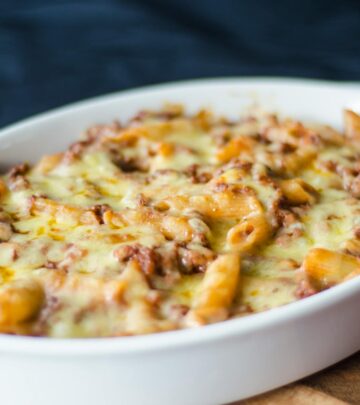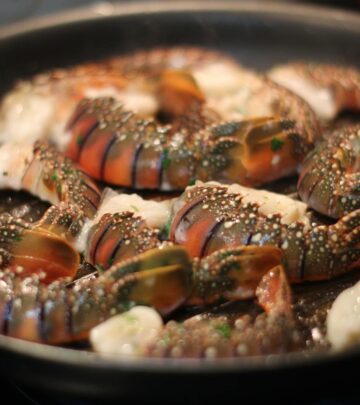Mandazi: The Ultimate Guide to East African Beignets
Discover the magic, history, and simple recipes behind East Africa’s soft, fluffy, and irresistible mandazi.

Mandazi, sometimes dubbed the “African doughnut,” is a beloved fried bread originating from East Africa. Soft, fluffy, and lightly sweetened with aromatic spices, mandazi holds a special place in Swahili culture and beyond. This comprehensive guide explores the history, significance, variations, and step-by-step recipes to help you craft perfect mandazi at home—whether you’re new to African cuisine or looking to perfect your favorite snack.
What Are Mandazi?
Mandazi are deep-fried, lightly sweetened dough treats that resemble beignets or doughnuts. Unlike the typical Western doughnut, mandazi are not overly sugary and are often delicately flavored with cardamom, coconut, or nutmeg. They’re enjoyed as breakfast, snacks, or as accompaniments to tea or coffee throughout East Africa, especially in countries like Kenya, Tanzania, and Uganda.
- Shape: Traditionally formed into triangles, squares, or rounds.
- Texture: Fluffy and pillow-soft inside, with a golden, slightly crisp exterior.
- Flavor: Mildly sweet, often enhanced by spices or coconut.
Mandazi in East African Culture
Mandazi is a staple in Swahili households and is deeply woven into the social and culinary fabric of East Africa. They are often served during communal gatherings, celebrations, or as a comforting everyday treat. Their adaptability means they can be enjoyed plain, dusted with sugar, or served alongside savory curries and stews.
Historical Background
The origins of mandazi trace back to the Swahili coast, where trade with Arab merchants influenced local cuisine, introducing exotic spices and new cooking techniques. Today, mandazi remains a testament to this rich history and fusion of cultures.
Essential Ingredients for Classic Mandazi
While recipes may vary regionally or by household, the core ingredients for soft, traditional mandazi include:
- All-purpose flour
- Sugar
- Baking powder or yeast
- Warm milk or coconut milk
- Egg
- Margarine or butter
- Ground cardamom (optional)
- Salt
- Vegetable oil (for frying)
The key to tender mandazi is achieving a soft dough—don’t be afraid to get a little sticky! Cardamom adds an unmistakable East African aroma, while coconut milk or fresh grated coconut grants extra richness and authenticity.
Step-by-Step Mandazi Recipe
This classic recipe delivers pillowy, golden mandazi perfect for breakfast, tea time, or dessert. Follow the steps below for irresistibly soft East African beignets.
Ingredients
- 3 cups all-purpose flour (plus extra for dusting)
- 5 tablespoons sugar
- 1 teaspoon baking powder (or 2 teaspoons instant yeast)
- 1/2 teaspoon ground cardamom
- 1/2 teaspoon salt
- 1 cup lukewarm milk (or coconut milk)
- 4 tablespoons melted butter or margarine
- 1 large egg
- Vegetable oil (for deep frying)
Preparation Instructions
- Combine Dry Ingredients:
- In a large bowl, whisk together flour, sugar, baking powder (or yeast), cardamom, and salt until evenly distributed.
- Mix Wet Ingredients:
- In a separate bowl, beat together the melted butter, egg, and lukewarm milk (or coconut milk).
- Knead the Dough:
- Pour the wet mixture into the dry ingredients. Stir until a soft, slightly sticky dough forms.
- If using yeast, knead the dough for 5–8 minutes until smooth and elastic. If using baking powder, just mix until combined.
- Let Dough Rest:
- Cover the bowl with a clean towel. Let it rest for 1 hour if using yeast (or 30 minutes if using baking powder), until the dough doubles in size and becomes airy.
- Shape the Mandazi:
- Turn the dough onto a floured surface. Roll it out gently to about 1cm (½ inch) thickness.
- Cut into triangles, squares, diamonds, or rounds using a knife, cookie cutter, or glass.
- Heat Oil and Fry:
- Pour vegetable oil into a deep, heavy-bottomed pan to 2–3 inches depth. Heat to 350°F (175°C).
- Carefully add pieces of dough, a few at a time. Fry for 2–3 minutes per batch, flipping every 30 seconds until golden brown and puffed.
- Use a slotted spoon to transfer mandazi onto paper towels to drain excess oil.
- Enjoy:
- Serve warm, plain, or dusted lightly with powdered sugar. Best enjoyed with tea or coffee!
Tips for the Best Mandazi
- Soft dough is key. Don’t over-flour the dough—if it’s too stiff, mandazi will be tough.
- Even thickness matters. Roll out the dough evenly for uniform frying and texture.
- Avoid overcrowding the pan. Fry a few mandazi at a time for even cooking.
- Oil temperature control. Too hot, and mandazi burn outside but stay raw inside. Too cool, and they’ll absorb excess oil.
- Let them drain. Set on paper towels to remove extra oil and stay crisp yet tender.
Popular Variations
Mandazi’s simplicity opens doors to countless adaptations. Here are some beloved regional spins:
- Coconut Mandazi: Replace milk with coconut milk and stir in shredded coconut for added texture and flavor.
- Spicy Mandazi: Add cinnamon or nutmeg alongside cardamom for a warming spice blend.
- Vegan Mandazi: Omit egg and dairy, using plant-based milk and margarine instead.
- Yeast Mandazi: For extra fluffiness, use instant yeast as a leavening agent.
- No-yeast Quick Mandazi: Use baking powder as the sole leavening for a faster recipe with a slightly different crumb.
Serving Suggestions
- Enjoy freshly fried mandazi as a breakfast treat with chai or coffee.
- Pair with savory stews, curries, or beans for a heartier meal.
- Serve as snacks at parties, picnics, or family gatherings.
- Dust with powdered sugar or drizzle with honey for an indulgent dessert.
- Mandazi can be enjoyed warm or at room temperature, and they stay soft for hours after frying.
Mandazi Recipe Table: Quick Comparison
| Version | Key Ingredient | Leavening | Preparation Time |
|---|---|---|---|
| Classic (Swahili) | Coconut milk, cardamom | Yeast (or baking powder) | 60–90 minutes (with rising) |
| Quick Mandazi | Regular milk | Baking powder | 30–40 minutes |
| Vegan Mandazi | Plant milk, margarine | Baking powder | 30–40 minutes |
| No Added Spice | Milk, butter | Baking powder | 30–40 minutes |
Frequently Asked Questions (FAQs)
Q: Can I make mandazi without yeast?
A: Absolutely. Many quick mandazi recipes use only baking powder as the leavening agent, resulting in a slightly different (but still delicious) texture.
Q: What is the best oil for frying mandazi?
A: Use a neutral, high-smoke point oil, such as vegetable, canola, or sunflower oil, to prevent flavor transfer and ensure crisp frying.
Q: Why is my mandazi tough or dense?
A: This usually results from over-flouring or over-kneading the dough. Aim for a soft, slightly sticky dough, and don’t overwork it.
Q: Can I prepare mandazi in advance?
A: Yes, you can shape the dough and refrigerate it overnight before frying, or simply store cooled mandazi in an airtight container for up to 2 days. Reheat briefly to restore fluffiness.
Q: Can I freeze mandazi?
A: Mandazi freeze extremely well! Let them cool completely, store in a freezer-safe bag, and reheat in the oven or microwave before serving.
Expert Tips for Success
- For extra softness, use a mix of both yeast and baking powder.
- For richer flavor, toast the cardamom seeds and grind them fresh just before mixing.
- To ensure even frying, flip mandazi every 30 seconds and monitor the oil temperature closely.
Conclusion: The Comfort of Mandazi
Mandazi embodies the best of East African hospitality—simple, comforting, and endlessly versatile. Whether you’re sharing a piece over tea with friends or discovering a new culinary tradition, mastering mandazi means unlocking a world of flavors and memories. Experiment with spices, shapes, and serving styles to make this classic your own.
Mandazi FAQs
- Is mandazi the same as a doughnut?
While both are fried dough, mandazi are less sweet and often flavored with spices like cardamom, setting them apart from classic doughnuts. - How do I keep mandazi soft for longer?
Store in an airtight container while slightly warm, or wrap well and freeze them for easy reheating. - Can I use whole wheat flour in mandazi?
Yes, but the texture will be denser. You may want to blend whole wheat with all-purpose flour for a lighter result.
Ready to try your hand at these East African favorites? Gather your ingredients and savor the magic of fresh mandazi, straight from your kitchen to your table!
References
- https://swahilifood.com/snacks/how-to-make-soft-mandazi-biegnets/
- https://formationsofanoblewoman.com/easiest-4-ingredient-mandazi-kenyan-mandazi-recipe-on-a-budget/
- https://www.allrecipes.com/recipe/262205/mandazi-african-donuts/
- https://www.youtube.com/watch?v=q4hrfE9PnAM
- https://www.africanbites.com/easy-mandazi/
Read full bio of medha deb

















Community Experiences
Join the conversation and become a part of our empowering community! Share your stories, experiences, and insights to connect with other beauty, lifestyle, and health enthusiasts.